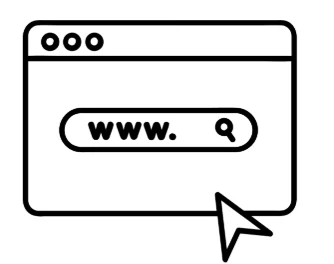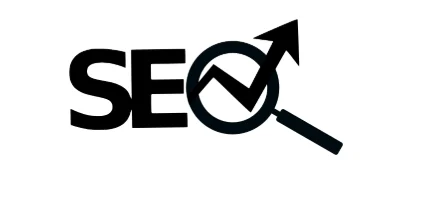If you’ve been exploring the world of search engine optimization, you may have wondered: what is reciprocal link in SEO, and does it really make a difference? According to a study by Ahrefs, over 43% of high-ranking sites have reciprocal links as part of their backlink profiles, proving how common and strategically important this practice remains.
In the competitive digital ecosystem, webmasters are constantly seeking ethical, sustainable ways to boost authority and visibility. This is where reciprocal links, often misunderstood or misused, play a unique role. So, let’s dive into what is reciprocal link in SEO and why it still matters today.
What Is Reciprocal Link in SEO?

A reciprocal link in SEO is when two websites agree to link to each other’s content. It’s essentially a “you link to me, and I’ll link to you” arrangement.
Example:
- Website A: A travel blog.
- Website B: A hotel booking site.
👉 Website A writes an article about “Top 10 Hotels in Paris” and links to Website B’s booking page.
👉 In return, Website B publishes a blog post on “Best Travel Blogs to Follow” and includes a link back to Website A.
Now, both sites have given each other a backlink, that’s a reciprocal link.
Historical Context and Evolution of Reciprocal Linking
Reciprocal links have been a part of SEO since the early days of search engines. In the late 1990s and early 2000s, webmasters routinely exchanged links as a simple method to increase visibility and PageRank. However, as link farms and manipulative exchanges proliferated, search engines like Google tightened quality controls.
Algorithm updates like Penguin specifically targeted unnatural link patterns, and the rules around what is reciprocal link in SEO evolved to prioritize relevance, quality, and intent over mere quantity.
How Reciprocal Links Work?

A reciprocal link happens when two sites agree to link to each other. For example, Site A links to Site B and, in return, Site B links back to Site A. This is often motivated by a mutual benefit – boosting both referral traffic and perceived authority. Understanding what is reciprocal link in SEO is key, as search engines now assess the context, value, and naturalness of these exchanges.
Reciprocal Links vs. Link Exchanges vs. One-way Links
One-way Links: A link from one site to another with no expectation of a return link. One-way links are often viewed as more organic and valuable by search engines.
Reciprocal Links: A direct, two-way exchange where both sites link to each other.
Link Exchanges: A broader category, which may include complex arrangements (more than two sites) in link swaps.
Natural vs. Agreed Reciprocal Links
- Natural Reciprocal Links: Occur when two site owners independently find each other’s content valuable and link without formal agreements. These are less likely to trigger spam filters and are viewed as authentic endorsements.
- Agreed Reciprocal Links: These arise from explicit outreach or partnership strategies. While common, if overused or implemented carelessly, they risk being flagged by search engines.
Reciprocal Links Versus 3-Way Link Exchanges
In a 3-way link exchange, Site A links to Site B, Site B links to Site C, and Site C links to Site A. This approach aims to create “non-reciprocal” patterns to bypass search engine detection. However, search engines have developed sophisticated algorithms to spot unnatural linking patterns, making it vital to focus on relevance and genuine relationships rather than simply gaming the system.
The SEO Impact of Reciprocal Links

Benefits:
- Can increase site authority and build relationships within a niche.
- Provides additional pathways for referral traffic and content discovery.
- Fosters trust when done between relevant, reputable websites.
Risks:
- Excessive, irrelevant reciprocal links may trigger penalties.
- Associating with low-quality sites can harm your reputation.
- Manipulative link exchanges designed to inflate rankings can backfire.
Understanding what is reciprocal link in SEO helps you make decisions that maintain long-term search engine trust and visibility.
Best Practices for Reciprocal Linking

- Only exchange links with reputable, topic-relevant sites.
- Ensure links are placed within high-quality, user-focused content.
- Avoid large-scale, automated reciprocal link schemes.
- Make reciprocal linking a minor, not dominant, part of your link-building strategy.
- Regularly audit your backlink profile to identify and disavow toxic links.
Finding and Managing Reciprocal Link Opportunities
- Leverage relationships with industry peers and partner businesses.
- Use SEO tools to research relevant sites with complementary audiences.
- Personalize your outreach. Genuine collaboration is more valuable than mass solicitation.
- Track and monitor your reciprocal links using Google Search Console or specialized SEO tools.
- Periodically review agreements to ensure continued value and compliance with current SEO best practices.
Frequently Asked Questions (FAQ) About Reciprocal Links
Are reciprocal links considered black hat SEO?
No. Reciprocal links are not inherently black hat. They only cross into black hat territory when abused, such as through excessive, irrelevant, or manipulative exchanges that violate search engine guidelines.
How many reciprocal links are safe?
There’s no definitive number. The focus should be on quality, not quantity. Even a few high-value, relevant reciprocal links can be beneficial while dozens of irrelevant ones can hurt your rankings.
Should reciprocal links be nofollow or dofollow?
It depends on the nature of the relationship and the content. For editorial, relevant links, dofollow is fine. If there’s any potential conflict of interest or the link is less editorial, using nofollow can be safer.
What should you do if a partner removes your link?
First, reach out and ask why, as it could be a technical issue or editorial decision. If the link was crucial for your site’s authority, look for new, quality opportunities elsewhere.
Are reciprocal links still effective today?
Yes, but only when used thoughtfully and sparingly within a strategy focused on quality, relevance, and user value. Understanding what is reciprocal link in SEO ensures you deploy this tactic sustainably and effectively.
In summary, knowing what is reciprocal link in SEO, its best uses, and its risks will help you build a solid, Google-compliant backlink profile. Approach reciprocal linking as a supplement to robust, ethical link building for the best results. For more, check detailed guidelines from Ahrefs or Backlinko.
